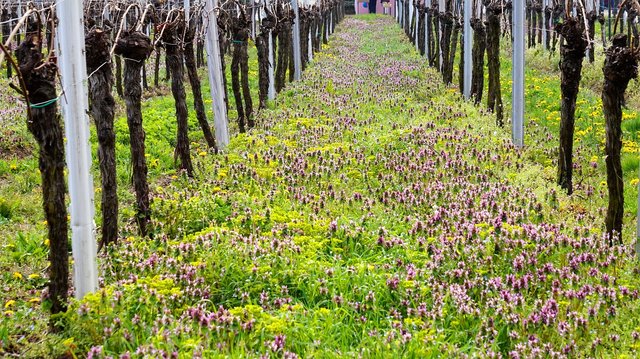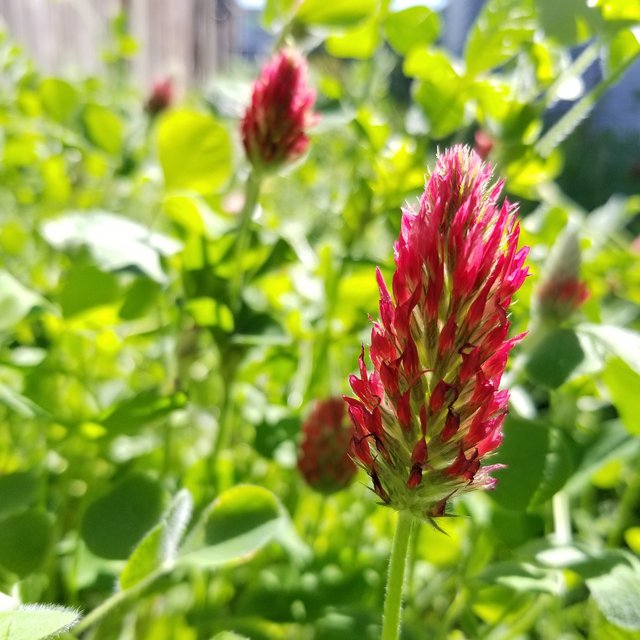Permaculture - Cover crops (lesson 33)
Cover crops
As you may remember from the previous lessons, there is nothing worse than open ground. The soil, exposed to the sun and wind, quickly becomes sterile and all minerals are lost. In nature, such uncovered soil is very rare, but in our gardens, it is quite a common sight.
Uncovered soil can be dealt with in many ways - you can cover it with fresh compost, sawdust, or straw mulch, or… that's it, or use cover crops.
While in a pot or on a small backyard bed, mulching is not that problematic, but when we have a larger piece of the field where we plant potatoes or corn, it becomes impossible to find enough bedding material. In such situations, we use cover crops, i.e. we plant special plants that are used only to be cut over time and used as green fertilizer. We have already talked a lot about such fertilizers in Lessons 6 and 7 - check it again.
In discussing green manure in previous lessons, we focused on their soil-building properties, what minerals they extract from the deeper layers of the earth, and which ones bind nitrogen from the air. Today it is worth highlighting their additional functions:
- they protect the earth from the negative effects of the sun, winds, and heavy rains
- can be used as food for humans or livestock
- they block the spread of weeds in the garden
- loosen the soil through their extensive root system
In permaculture, monoculture, including that of ground cover crops, is not desirable. They deplete the region's biodiversity and increase the risk of plant diseases. So it's best to mix several types of ground cover - the more the better. Perhaps some of the plants you have sown will never grow, suppressed by faster-growing species - don't worry about it. The most important thing is to start the process by planting many types of seeds. Even if a small fraction of them never grow, nothing bad will happen.
Increasing the diversity of cover crops affects the mineral richness of the soil and the richness of microorganisms in the soil as each plant attracts different microorganisms and extracts other nutrients from the soil (see lessons 6 and 7). Thus, we will provide future crops with healthier conditions for growth and protect them from many potential diseases.
General rules for selecting ground cover plants:
- If you want to prepare the soil for an orchard, plant perennial cover plants. When you intend to cover the ground between crops, use annuals
- adjust plants to temperatures and other weather conditions
- if you choose green fertilizer from plants that fix nitrogen in the air, mow them before they set seeds because in their old age plants lose nitrogen from the stems and deliver it to the seeds. Also, remember about the correct C: N ratio (lesson 4)
- if you want to attract beneficial insects to your garden, opt for Buckwheat flowers, phacelia, fava beans, many clover, beans, mustard, and vetch
- if you want to loosen the soil with the extensive root system of herbaceous plants, plant rapeseed, mustard, alfalfa, daikon radish
- you can use green plants as living mulch. Masanobu Fukuoka, author of "The One-Straw Revolution" used a perennial white clover for this purpose, planting it in his beds and removing it only in the crevices where he planted vegetables
- an ideal mix of cover crops should contain 5-10 different species of plants.
COVER CROPS for the cold weather (down to 0C)
| Crops | Soil Preference | Nitrogen fixer |
|---|---|---|
| Austrian winter pea | Heavy | Yes |
| Barley | Loam | No |
| Bell Bean | Loam, can be poor | Yes |
| Blando bromegrass | Many, can be poor | No |
| Clover | Many, depends on the kind | Yes |
| Fava bean | Many | Yes |
| Fescue Zorro | Many | No |
| Garbanzo bean | Many | Yes |
| Mustard | Heavy can be poor | No |
| Oat | Many | No |
| Rapeseed | Loam | No |
| Vetch | Many | Yes |
COVER CROPS for the hot weather
| Crops | Soil Preference | Nitrogen fixer |
|---|---|---|
| Black-eyed peas | Many | Yes |
| Buckwheat | Loam | No |
| Cowpeas | Loam | Yes |
| Lablab | Many | Yes |
| Pinto Beans | Loam | Yes |
| Sesbania | Many | Yes |
| Soybeans | Many | Yes |
| Sudan Grass | Many | No |
| Sunn Hemp | Many | No |
COVER CROPS – PERENNIALS
| Crops | Soil Preference | Nitrogen fixer |
|---|---|---|
| Alfalfa | Loam | Yes |
| Birdsfoot Trefoil | Many | Yes |
| Chicory | Heavy | No |
| Clover | Many | Yes |
| Fescue | Many | No |
| Orchardgrass | Many | No |
| Ryegrass | Heavy | No |
| Timothy grass | Heavy | No |
All my lessons are shared totally for free with a CC-0 license (which means you can copy my text and share it wherever you want to, without the need to mark me as an author). I hope it will bring you joy.
Previous lessons can be read here:
Fertilizers
2 - types of manure and when to use it
3 - Compost. Basics
4 - advanced composting
6 - Green manure
7 - Phytosanitary plants
8 - Mineral fertilizers
--------------------------------------------------
Soil and minerals
10 - Boron, Molybdenum, Copper, Magnesium
11 - Zinc, Calcium, Iron and other elements
12 -soil components: sand and clay
14 -soil components: calcium, microorganisms, minerals
15 -soil components: water and air
--------------------------------------------------
Space
17 - Sectors in Permaculture
18 - Zones & sectors, practical use
19 - Perfect size of your garden
20 - What to choose lawn or meadow?
22 - Water reservoirs in the garden
23 - Rock Garden
24 - Patchwalks
--------------------------------------------------
Basics of traditional permaculture
26 - Basic tips for permaculture gardeners
--------------------------------------------------
Different types of beds
28 - Raised beds/Lazy beds
31 - Hugelkultur
--------------------------------------------------
Food production
29 - homemade sugar in non-tropical climate
Thank you for reading,
@papi.mati


A very interesting post. As always bringing us good tips, thanks ; D
Congratulations, your nice post has been upvoted by the steem.skillshare curation trail!
If you wish to join as well our trail and support our community, other users, and earn the curation reward, please check out this post:
steem.skillshare curation trail post